Cave architecture is also known as Rock-cut architecture. The rock-cut architecture is a type of Rock Art in which a structure is created by carving it out of solid natural rock. The cave architecture in India is believed to have begun during the ancient time. These caves were used by Buddhist and Jain monks as places of worship and dwelling. Initially the caves were excavated in the western India.
Indian rock-cut architecture is more diverse and abundant than any other type of rock building seen around the world (more than 1,500 rock-cut structures in India). The Mauryans were masters of cave architecture and are credited as being the forefathers of rock-cut cave architecture. Some examples of this type of cave structure are Chaityas and Viharas of Buddhists. The great cave at Karle is also one such example, where great Chaityas and Viharas were excavated by hewing out rocks.
History & Origin of Cave Architecture
- Caves in India have been regarded with reverence since time immemorial. The most primitive caves were the natural ones that were used for different reasons by natives of such areas as places of worship and shelters.
- Rock-cut designs carved on overhanging rocks form the early examples of architectural craftsmanship of human being on such structures. The arrival of Buddhist missionaries saw use of such natural caves as Varshavasa – that is places of dwelling during rainy season – and also as temples thus enabling them to lead a monastic life in accordance with the aesthetic nature of Buddhism.
- Caves excavated out of colossal rocks gradually evolved because of their durability in comparison to other construction material such as wood and with time these structures became more enhanced and richer architecturally.
- The western Deccan region saw initial excavation of caves. The region has the early cave temples predominantly Buddhist shrines and monasteries that trace back between 100 BC and 170 AD. Many Jain cave basadi that is shrines and temples also form early example of rock cut architecture.
- The Barabar caves located in the Jehanabad district in the state of Bihar, India, are the oldest surviving caves in India showcasing rock-cut architecture.
- Rock-cut Hindu and Buddhist sculptures can be seen in these caves many of which dates back to around the 3rd century BC during the reign of the Maurya Empire (322–185 BCE).
- Some of the other earliest cave temples reflecting cave architecture are situated in the state of Maharashtra, India, including the 2nd century BC Bhaja Caves, the 1st century BC Bedse or Bedsa Caves, the Karla or Karle Caves dating back between 2nd century BC to 5th century AD, the 1st century BCE to 10th century CE developed Kanheri Caves and some of the Ajanta Caves tracing back between 2nd century BCE to around 480 or 650 CE.
Types of Caves
- Buddhist caves
- Hindu caves
- Jain caves
Buddhist Caves
- Some of the finest examples of cave architecture can be found in the ancient Buddhist caves. The greater chunk of around 1200 surviving cave temples is Buddhist.
- The topography of the Western Ghats including the deep ravines, the sharp rocky exposures and horizontal basalt hill tops naturally drew the Buddhist monks to the region where they employed the caves as shelters and shrines.
- From 200 BCE to 650 AD the Buddhist monks kept on occupying the earliest Kanheri Caves situated inside the forests of the ‘Sanjay Gandhi National Park’ in Maharashtra, India, that were excavated out of a huge basaltic rock outcropping during the 1st and 2nd centuries B.C. as also the earliest Ajanta caves dating back to the 2nd century BCE.
- The earliest caves comprising of cave temples that are associated with Buddhism include the Karla Caves, the Kanheri Caves, the Bhaja Caves, the Bedsa Caves and the Ajanta Caves.
- Ideology of Buddhism encourages association with trade and commerce and early involvement of the Buddhists with traders probably influenced them to locate their monastic establishments in close proximity to major trade routes. All Buddhist caves are thus located near important trade routes and remained stopovers for many travelling traders. Commissioned by some of these wealthy traders the interiors of the caves gradually became more enhanced and elaborate. These included sectionalising areas for specific purposes like the viharas and chaityas and embellishing the areas with fine carvings, reliefs and paintings.
- Some caves also included elaborate facades, arches and pillars. The Buddhist chaityas and viharas stand as examples of early cave structures. While the viharas were residential areas of the monks, the congregational worship was conducted in the cave shrines known as chaityas. A pillared circular chamber in the garbhagriha hewn out of rock enabled one to circumambulate around the stupa.
- Buddhist architecture saw a second phase that started in the 5th century AD. The most prominent aspect of architectural design that emerged during this period was introduction of the image of Lord Buddha. Huge statues of Lord Buddha in various postures as also Jataka stories and deities associated with Buddhism in the form of paintings and carvings found place on the stupas. Sculptures associated with Buddhism were also introduced in the viharas.
| Chaitya Caves | Vihara Caves |
|---|---|
| Places of worship used by the Buddhist monks. It has an object of worship called ‘Stupa’ | Places of residence in Buddhist caves. Also called as monastery |
| In Hinayana period (earlier Buddhism ) symbolic worship is observed so any sculpture of Buddha and related deities are not carved on the Stupa. In Mahayana (later Buddhism), Buddha related deities and jataka Stories are carved and painted. | Found both in Hinayana and Mahayana sects. Hinayana Vihara are with carving of Stupa without image of Buddha. Mahayana Vihara have sculptures related to Buddhism. |
| On the Stupa, Buddha in various posture is also carved. |
Hindu Caves
- The Hindu caves that are located at different places across India are sort of extensions of Buddhist cave architecture with of course certain alterations in architecture and design suiting the Hindu customs and traditions.
- The phase of excavation of these caves is from 4th century AD to 8th century AD.
- Themes from great Hindu epics like the Ramayana and the Mahabharata are depicted in the structures.
Jain Caves
- Although it is difficult to trace the earliest phase of Jain cave architecture, it is generally considered to be between 6th century AD and 12th century AD.
- The highly embellished sculptures of these caves illustrate the tales of Tirthankaras of Jain Pantheon.
- Elaborately painted ceilings are found in some Jain caves like the ones in Ellora in Maharashtra and Sittanavasal in Tamil Nadu.
Rock Cut Caves
Saptaparni Cave
- Saptparni Cave, also referred to as Sapta parni guha (Saraiki) or sattapaṇṇi guhā (Pali), literally Seven-leaves-cave is a Buddhist cave site about 2 kilometres (1.2 mi) southwest from Rajgir, Bihar.
- It is embedded in a hill. The Saptaparni Cave is important in the Buddhist tradition, because many believe it to be the site in which Buddha spent some time before his death, and where the first Buddhist council was held after Buddha died (paranirvana).
- It is here that a council of few hundred monks decided to appoint Ananda (Buddha’s cousin) and Upali, believed to have a good memory and who had accompanied the Buddha when he gave sermons in north India, to compose Buddha’s teachings for the future generations.
- The Buddha never wrote down his teachings. After the Saptaparni Caves meeting, Ananda created an oral tradition of Buddha’s teaching from his memory, prefacing it with “Thus have I heard on one occassion”.
- Upali is credited with reciting the Nikaya discipline or “rules for the Bhikshus”.
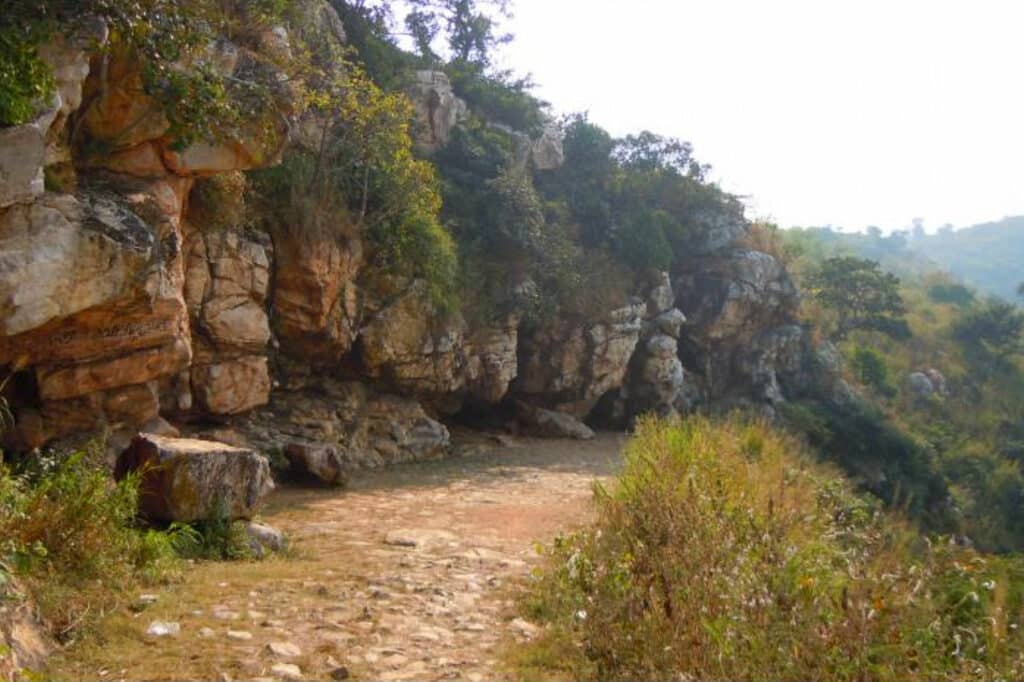
Barabar Caves
- The Barabar Hill Caves are the oldest surviving rock-cut caves in India, dating from the Maurya Empire (322–185 BCE), some with Ashokan inscriptions, located in the Makhdumpur region of Jehanabad district, Bihar, 24 km (15 mi) north of Gaya.
- These caves are situated in the twin hills of Barabar (four caves) and Nagarjuni (three caves); caves of the 1.6 km (0.99 mi)-distant Nagarjuni Hill are sometimes singled out as the Nagarjuni Caves.
- These rock-cut chambers bear dedicatory inscriptions in the name of “King Piyadasi” for the Barabar group, and “Devanampiya Dasaratha” for the Nagarjuni group, thought to date back to the 3rd century BCE during the Maurya period, and to correspond respectively to Ashoka (reigned 273–232 BCE) and his grandson, Dasharatha Maurya.
- The caves of Barabar Hill are the world’s oldest rock-cut caves. These caves were carved out of a single piece of solid granite.
- The sculptured surround to the entrance to the Lomas Rishi Cave is the earliest survival of the ogee shaped “chaitya arch” or chandrashala that was to be an important feature of Indian rock-cut architecture and sculptural decoration for centuries. The form was clearly a reproduction in stone of buildings in wood and other plant materials.
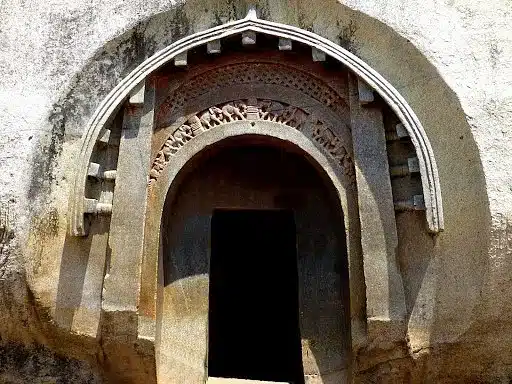
Features of Barabar Caves
- Emperor Ashoka built the Barabar Caves for the benefit of Ajivika ascetics, and it is hence known as the birthplace of the Ajivika sect.
- The caves of Barabar Hill are Buddhist caves. A few Hindu and Jain sculptures can also be found.
- The Nagarjuni Hills (comprising three caves) are located two kilometres from the Barabar Hills Caves (which include four caves).
- They are referred to as ‘Satghar’ since they are thought to be from the same time period.
- The Baba Siddhanath Temple, also known as the Shiva Temple and formerly known as Siddheshwar Nath Temple, is situated atop one of the Barabar Hills’ highest peaks.
- This temple is supposed to have been constructed during the Gupta Dynasty’s reign.
- The fascinating echo effect may be found in all of the Babrabar caves.
Caves at Barabar Hill:
- Barabar Hill contains four caves: Karan Chaupar, Lomas Rishi, Sudama and Visvakarma.
- Sudama and Lomas Rishi are the earliest examples of rock-cut architecture in India, with architectural detailing made in the Mauryan period. Similar examples include the larger Buddhist Chaitya, found in Maharashtra, such as in Ajanta and Karla Caves. The Barabar caves greatly influenced the tradition of rock-cut architecture in the Indian subcontinent.
Lomas Rishi Caves
- The man-made Barabar caves, also known as the Grotto of Lomas Rishi, are located on the southern side of the Barabar hills.
- As a sanctuary, the rock-cut Lomas Rishi Cave was dug out.
- It is the earliest surviving example of the ogee-shaped Chandrashala or Chaitya Arch, which has long been a popular feature of Indian sculpture and rock-cut building.
- Lomas Rishi Cave’s arch-like facade is a perfect recreation of monks’ wood and thatch cottages.
- The Lomas Rishi Cave is divided into two rooms. After passing through a brief tunnel, there is a large rectangular hall, approached from the side, that serves as an assembly hall.
- A second, smaller hall, with an oval-shaped interior and a dome-shaped roof, is located further within.
- The chambers’ interior surfaces have a spectacular glass-like gloss and are extremely beautifully finished. In the Barabar Caves, this is a common construction.
- The cave served as a model for the bigger Buddhist Chaitya halls located in Maharashtra, such as the Ajanta or Karli caves, and had a significant impact on the South Asian rock-cut building heritage.
- Lomas Rishi Cave was excavated and given to the Ajivikas monks during the time of Mauryan ruler Ashoka.
- The Ajivikas were an ancient Indian religious and philosophical sect that competed with Jainism and eventually died out. They pondered in caves, rejecting both the Vedas’ authority and Buddhist beliefs.
- The inscription of the elephant and other symbols can be seen on the cave’s wall and at the entrance of Chaitya arch. The Lomas Rishi Cave does not have any Ashoka inscriptions.
- Buddhists used the Lomas Rishi Cave after Ajivikas since the cave’s door jamb contains the Bodhimula and Klesa-Kantara inscriptions.
- Anantvarman, a Hindu ruler of the Maukhari dynasty, dedicated a statue of Krishna to the cave, according to a Sanskrit inscription on the arch.
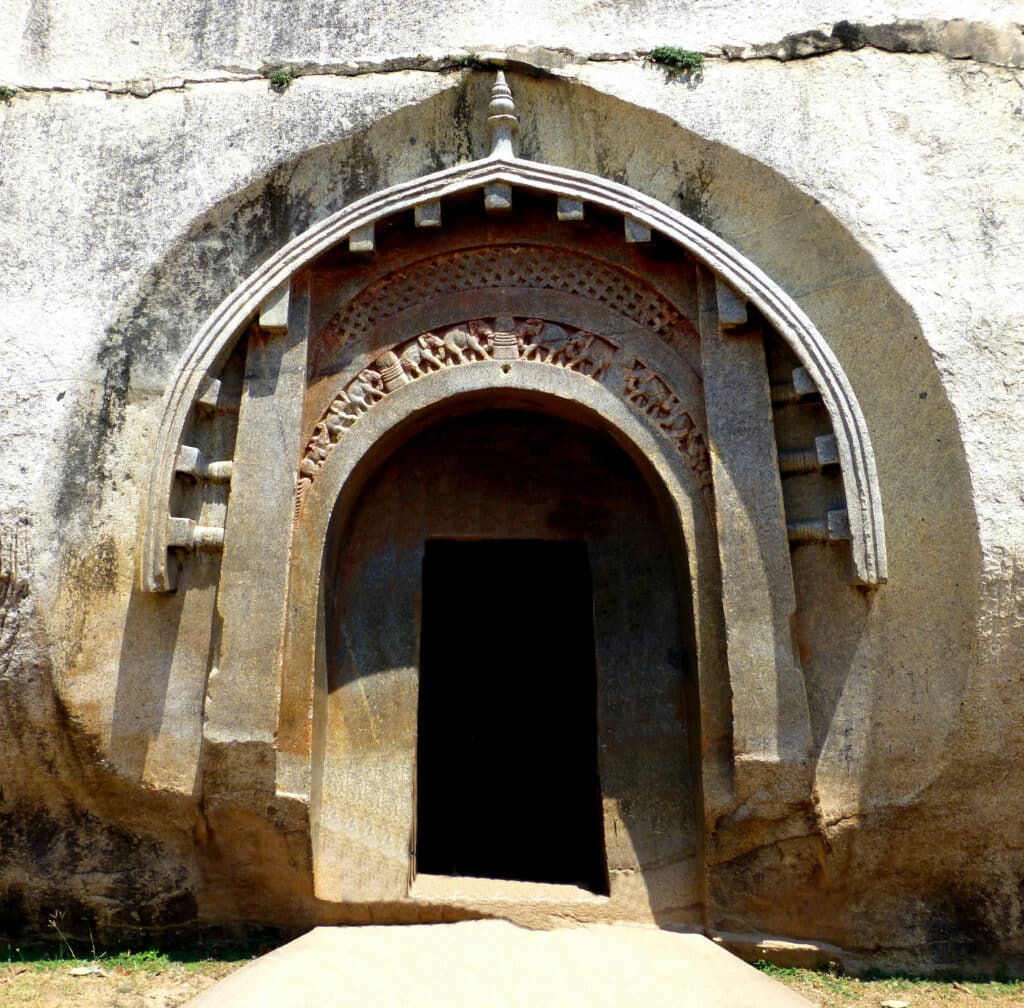
Sudama Caves
- Sudama Caves are near to the Lomas Rishi Caves on the left side of the Barabar Hills.
- Sudama cave, according to an inscription placed near its entrance, was perhaps the first cave dug in the Barabar cave group.
- Emperor Ashoka donated Sudama cave, as shown by an inscription in Brahmi inscribed in the cave’s entrance employing his protocol name (Priyadarsin, “He who provides joy”).
- A short entrance porch leads to a rectangular path at the Sudama cave’s entrance.
- The Sudama cave has an arched roof. It has a vaulted circular room within which is a rectangular mandap.
- Sudama caverns’ interior walls are an engineering marvel. The extremely flat and polished granite surface provides a mirror image.
- The wall between the two chambers features a central entryway and an unusual upper hemi-spherical part that is curved and bowed towards the centre, like the roof of native bamboo and thatch beehive homes.
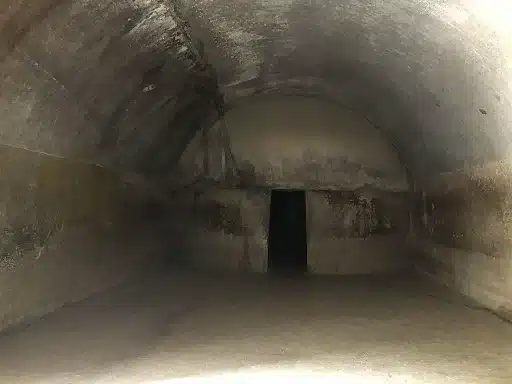
Vishwakarma Cave
- Vishwakarma Cave, like other Barabar caves, is made up of two rectangular rooms. The room is completely open to the exterior, like an extended porch.
- Vishwamitra caves is another name for it.
- The “Ashoka Steps” built into the cliff provide access to this cave.
- During Ashoka’s 12th year of reign, he offered Vishwakarma cave to Ajivikas.
- It’s the only cave in the series that doesn’t have any inscriptions from after the Asoka period.
- Emperor Ashoka dedicated Vishwakarma cave in 260 BC, and 7 years later, he dedicated Karan Chaupar cave, which is a short distance from Vishwakarma cave.
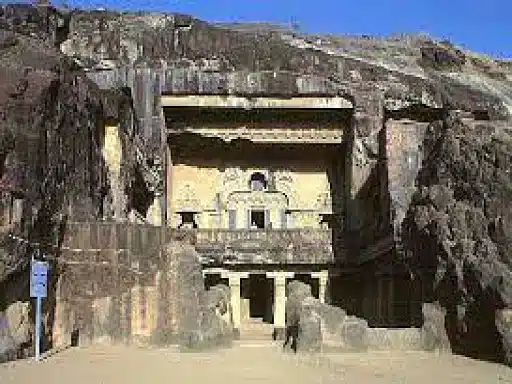
Karan Chaupar Cave
- Karan Cahupar is located on the Barabar Hills’ northern flank.
- It has an Ashoka inscription dated the 19th year of his reign on it.
- The Buddhist practice of retiring (Vassavasa) during the monsoons is described in an inscription found at the cave’s entrance.
- The inverted swastika at the conclusion of the inscription shows that this cave, one of the four Barabar Caves, was reserved for Buddhist monks.
- A mound near the entrance is also covered with later Buddhist sculptures, indicating that the cave once belonged to Buddhists.
- At one end of the cave is a rock-cut seat. It is made out of a single rectangular room with gleaming surfaces.
- An inscription from the Gupta dynasty in the entry chamber says “Daridra Kantara” (“The Cave of the Beggars”).
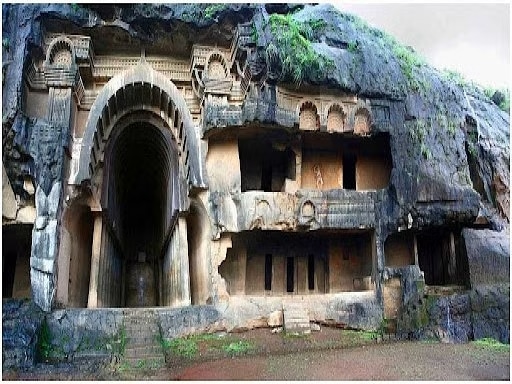
Nagarjuni Caves
- The nearby caves of Nagarjuni hill were built few decades later than the Barabar caves, and consecrated by Dasaratha Maurya, Ashoka’s grandson and successor, each for the Ajivikas sect. They are 1.6 kilometers east of the Barabar Caves.
- There are three caves excavated in the Nagarjuna Hills – the Vadathi-ka-Kubha (Vedathika Kubha), the Vapiya-ka-Kubha (Mirza Mandi), and the Gopi-ka-Kubha.
- Largest Cave: Gopi cave or Milkmaid’s cave
- Gopi (Gopi-ka-Kubha, milkmaid) is a cave reached by stepping up a flight of megalithic steps. It has got the largest chamber in the group. The cave contains several important inscriptions, some of these testify that son of Ashoka – Dasaratha (reigned in 232 – 224 BC) – has devoted these caves to Ajivika – thus these structures might be some 50 years younger than caves at Barabar. The cave is 12.3 m long and 5.8 m wide, both ends of the chamber are semi-circular. The roof is vaulted, up to 3.2 m high. This cave has polished walls and floor – the famous “Mauryan polish”.
- North from Nagarjuna Cave there is the second cave – Mirza Mandi (house of Mirza). Next to it, there is a dry well – this can explain the other name of it – Vahiyaka, Vapuiyaka Kubha, Vapya-ka-Kubha – “cave of the well”. Nearby there are remnants of several buildings – possibly viharas – Buddhist shrines.
- The cave contains inscription: “The Vahiyaka Cave was assigned by Dasaratha, immediately after his consecration, to the venerable Ajivikas. Other caves have similar inscriptions, just the name of the cave is different.

Pitalkhora Caves
- The Pitalkhora Caves, in the Satmala range of the Western Ghats of Maharashtra, are an ancient Buddhist site consisting of 14 rock-cut cave monuments which date back to the third century BCE, making them one of the earliest examples of rock-cut architecture in India.
- Located about 40 kilometers from Ellora, the site is reached by a steep climb down a flight of concrete stairs, past a waterfall next to the caves.
- The caves are cut in a variety of basalt rock, but some of the caves have crumbled and are damaged. Out of the 14, four are chaityas (one housing votive stupas, one apsidal and single-cell) and the rest are viharas.
- All the caves belong to the Early Buddhist schools period, but the reasonably well preserved paintings are of the Mahayana period.
- The caves are in two groups, one of 10 caves and the second of four. It is believed that Pitalkhora can be identified with Ptolemy’s “Petrigala” as well as the “Pitangalya” of Mahamayuri, a Buddhist chronicle. The inscriptions date from c. 250 BCE to the 3rd and 4th centuries CE.
- The site shows statues of elephants, two soldiers of which one is intact, a damaged Gaja Lakshmi icon, and an ancient rainwater harvesting system. These caves have been significant in helping establish the chronology of cave building in the Ajanta-Ellora region.
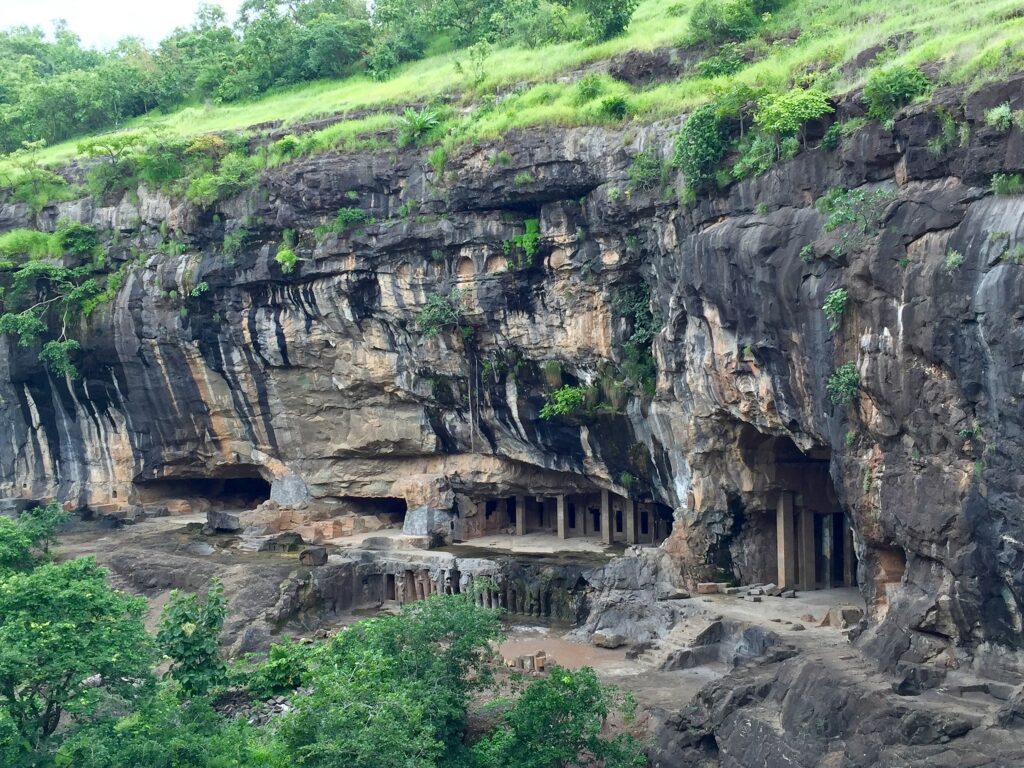
Kondana Caves (Raigarh, Maharashtra)
- The Kondana Caves are located in the small village of Kondana, 33 km north of Lonavala and 16 km northwest of Karla Caves.
- This cave group has 16 Buddhist caves. The caves were excavated in first century B.C. The construction on wooden pattern is notable.
- The cave only one inscription on the front of the Chaitya, which gives information about donors.
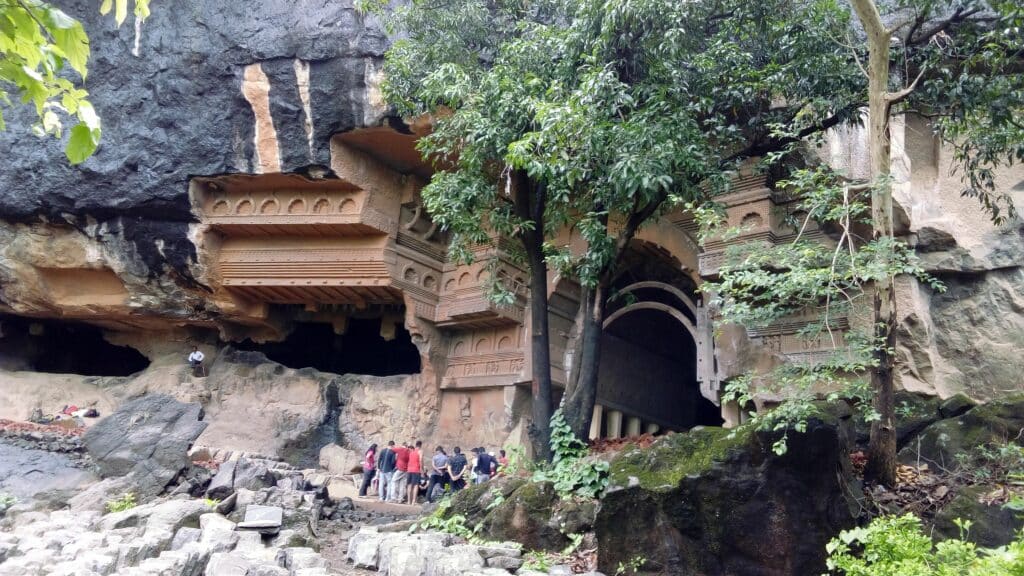
Bhaja Caves
- Bhaja Caves is a group of 22 rock-cut caves dating back to the 2nd century BC located in the city of Pune.
- It belongs to the Early Buddhist schools in Maharashtra. The caves have a number of stupas, one of their significant features. The most prominent excavation is its chaitya (or chaityagrha – Cave XII), a good example of the early development of this form from wooden architecture, with a vaulted horseshoe ceiling.
- Its vihara (Cave XVIII) has a pillared verandah in front and is adorned with unique reliefs. These caves are notable for their indications of the awareness of wooden architecture.
- The Bhaja Caves share architectural design with the Karla Caves. The most impressive monument is the large shrine — chaityagriha — with an open, horseshoe-arched entrance.
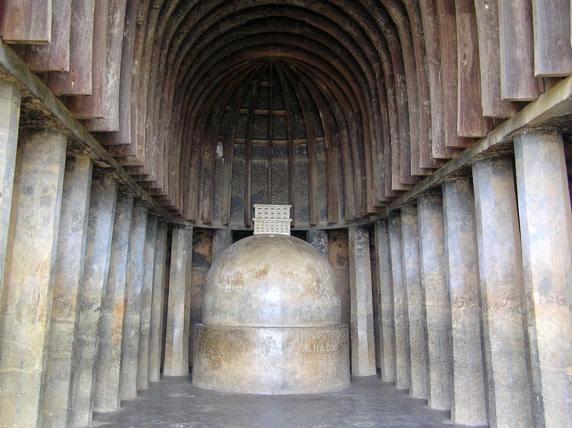
Features of Bhaja Caves
- The Hinayana sect of Buddhism is represented by the Bhaja Caves.
- The architectural design of the Bhaja Caves is similar to that of the Karla Caves.
- Their elaborate facades have made them famous.
- The most unique characteristic of the caves is that the beam of light of the setting sun enters the insides of the caves.
- The stupas, which are 14 in number and arranged in a huddle, are one of the cave’s most notable characteristics.
- They are thought to contain the relics of monks who lived and died in the Bhaja caves.
- Two of the stupas feature a relic box on the upper side, and all of them are intricately sculpted.
- Five of the 14 stupas are inside the smaller cave, while the other nine are outside.
- Exquisite headdresses, garlands, and jewelry adorn the sculptures in the Bhaja Buddhist grotto.
- There are several animal representations and inscriptions of Buddhist monks’ names, as well as some Buddha paintings.
- A Chaitya Griha, or prayer hall, is unique to the cave. The hall is surrounded by 27 pillars, with wooden beams affixed to the ceilings.
- The ceiling beams are the original ones, which is a unique feature. With an open, horseshoe arched entryway, it is the most stunning huge shrine chaitya griha.
- The chaitya griha features wooden construction prototypes and a vaulted horseshoe ceiling. Another interesting aspect of the cave is the wooden construction.
- The carvings prove that tabla – a percussion instrument – was used in India for at least two thousand years. The carving shows a woman playing tabla and another woman, performing dance.
- Simple rock-cut Viharas termed dwelling rooms and water Cisterns can be found throughout the Bhaja cave Buddhist complex.
- The vihars are ornamented with unique reliefs and have pillared verandahs in front.
- Bhaja’s viharas are divided into two levels. There are also a few viharas with two stories. At Bhaja, there is only one vihara with sculptural embellishment.
- One of the carvings depicts a woman playing the tabla and another doing the dance, indicating that the Tabla (or Pushkara as it was then known) has been used in India for over 2000 years.
- Near the last cave, there is a spectacular waterfall, the water of which flows into a little lake at the bottom during the monsoon season.
- The Archaeological Survey of India – ASI has designated the inscriptions and cave temple as a Monument of National Importance.

Karle Caves
- The Karla Caves, also known as the Karli Caves, Karle Caves, or Karla Cells, are a group of ancient Buddhist rock-cut caves in Karli, Maharashtra.
- It is just 10.9 Kilometers away from Lonavala. Other caves in the area are Bhaja Caves, Patan Buddhist Cave, Bedse Caves and Nasik Caves.
- The shrines were built over a long period of time, from the 2nd century BCE to the 5th century CE. The oldest of the cave shrines is said to have been built around 160 BCE, near a significant ancient trade route that ran eastward from the Arabian Sea into the Deccan.
- The first sacred Karla Cave was a natural cave, but after that, it was followed by man-made caves.
- The caves were traditionally linked to the Mahasanghika Buddhist sect, which enjoyed widespread popularity and financial support in this part of India.
- A Buddhist monastery from the 2nd century BC is housed in the caves.
- This cave, the largest in South Asia, was built between 50 and 70 CE and 120 CE, under the reign of Western Satraps ruler Nahapana, who documented the cave’s dedication in an inscription.
- The Karla group is one of the older and smaller of Maharashtra’s many rock-cut Buddhist sites, but it is one of the most well-known because of the famous “Grand Chaitya“.
- It is “the largest and most completely preserved” chaitya hall of the period, as well as containing an unusual amount of fine sculpture, much of it on a large scale.
- The caves were built with the help of several tradesmen and Satavahana rulers.
- Buddhist monastic facilities tended to be located in natural geographic formations close to main trade routes to provide lodging places for traveling traders, having become connected with commerce and manufacture through their early involvement with traders.
Karla Caves – Features
- From the first century CE until the fifth and sixth centuries CE, these caverns were excavated.
- The largest Hinayana Buddhist chaitya (temple) in India is Karla Cave.
- With only 15 caves, Karla Caves is one of India’s most prominent Buddhist rock-cut cave sites.
- The main Chaityagriha is one of India’s largest. Architecturally, sculpturally, and inscriptionally, it is significant.
- The Great Chaitya (Cave no. 8) at Karla is India’s largest rock-cut chaitya, spanning 45 meters (148 feet) long and rising to a height of 14 meters (46 feet).
- The Grand Chaitya includes gigantic pillars (square stepped plinth) with sculptures of males and females riding lions, elephants, and other animals. There is also a stupa in the center.
- Karla Caves are distinguished by large horseshoe-shaped windows that illuminate the interiors and vaulted ceilings.
- There are two 15-meter-high pillars outside the Chaitya, but only one of them survives now. The tops of the pillars are adorned with four lions.
- At the main Chaitya gate, there is a temple dedicated to a local goddess (A shrine of goddess Ekvira).
- Rows of pillars divide the chaitya into three sections: the central hall and narrow side aisles, which are separated by two rows of ornate pillars, each with 15 pillars.
- Beautiful capitals adorn the pillars, which depict men and women riding elephants and bowing to Buddha, among other things. Around the 7th century AD, representations of Buddha were added.
- In contrast to some other cave temples, the ceiling in Karla Cave No. 12 is made of wood rather than stone ribs.
- This woodwork (chhatri) is one-of-a-kind; the wood was cut 2,000 years ago and has been well preserved, with no signs of corrosion.
- The shrine – stupa with an umbrella over it – is located at the far end of Chaitya.
- The sculptures in Karla cave may be seen on the pillar capitals within the chaitya griha as well as in the verandah.
- After the 5th century CE, many Buddha and Bodhisattva sculptures were carved in the verandah.
- Karla’s sculptures represent new trends in Indian art – more plasticity, with figures that are approximately 60% free of the wall behind them. Sculptures are refined, with clothing folds, earrings, and so on.
- On the pillars in the hall, there are some vestiges of paintings from the 5th and 6th centuries CE.
- Many of the pillars in the hall include inscriptions in Brahmi script and Prakrit language that list the names of the contributors and their origins.
- The caves were built with the help of several tradesmen and Satavahana monarchs.
- Long inscriptions written by royal families from the first to second century CE can also be found.

Kanheri Caves
- Kanheri Caves are a collection of more than 100 Buddhist caves nestled among the tranquil surroundings of Mumbai’s Sanjay Gandhi National Park in Borivali. Kanheri, also known as Krishnagiri or Kanhagiri in ancient inscriptions, literally means “black mountain” (Krishna means “black” and Giri means “mountain”) and is named after a black basaltic stone.
- These caves include Buddhist sculptures, relief carvings, paintings, and inscriptions ranging from the 1st century BC to the 11th century AD.
- The Western Ghats’ topography, combined with political patronage, favored the creation of Buddhist caves in many of the Sahyadris’ hills, ravines, and cliffs.
- These caves are the earliest example of superb rock-cut architecture in the Western Ghats.
- The caves were cut between 200 and 600 A.D, according to historians.
- Kanheri was a significant monastery settlement that existed from the first century A.D. to the eleventh century A.D.
- By the time the area was ruled by the Mauryan and Kushan empires, Kanheri had become a university center.
- Kanheri thrived for nearly a millennium as a result of its proximity to the ancient port towns of Sopara (Nalasopara – known for its trading ties with Mesopotamia and Egypt, among others), Kalyan, Thane, and Bassein (Vasai).
- The majority of these caves have no known date, but inscriptions mentioning donors and specific king names have aided in their identification.
- By 1560, Buddhism had been gradually lost in Maharashtra, leading to the caves’ abandonment. They remained in a dilapidated state for 300 to 400 years.
- Following India’s independence, the Archeological Survey of India decided to take over, revitalise, and conserve the heritage site.
Kanheri Caves – Features
- Kanheri, also known as Krishnagiri or Kanhagiri in ancient inscriptions, literally translates to “black mountain” and is named because of its black basalt stone.
- Kanheri Caves (109 in number) are located north of Borivali in Mumbai within the Sanjay Gandhi National Park.
- Kanheri is home to both Chaityas and Viharas. The elements of wooden construction were kept in mind while creating them.
- The caves are the only location in western India with artistic evidence of all three vehicles of Buddhism — India’s three phases of the religion – Hinayana, Mahayana, and Vajrayana Buddhism.
- In Kanheri, Buddhist monks lived, studied, meditated, and spread the teachings of Gautama Buddha in 109 caves.
- During the monsoon, the caves were also used as shelters.
- Kanheri is a collection of rock-cut monuments, a form of western Indian traditional art.
- It also includes symbolism from later periods of Buddhist art.
- A vast Vihara (prayer hall) and stupas may be found inside the Kanheri caves.
- There are around 109 Buddha Viharas in the caverns, which were built specifically for the Bhikshus. The prayer rooms have pillared passageways and exquisite relics of Buddha and the Bodhisattvas.
- Cave No. 3 – At Kanheri, this cave has the most intact carvings. It also has a prayer hall known as the Chaitya Gruha.
- The prayer hall appears majestic, with intricately carved Buddhist sculptures — including slender figurines with arched eyebrows and delicate fingers and Stupas (dome-shaped shrines).
- It has a hall with 34 pillars and two large standing Buddha sculptures. It contains hints on the Theravada (Hinayana) Buddhist sect.
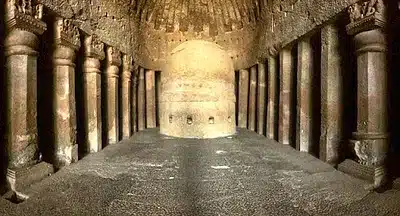
- Cave No. 11 – This cave is very similar to cave number five in Ellora, Aurangabad. They are India’s only caves where Buddhist monks have hosted group recitations of religious scriptures.
- To do their diurnal practice, they sat around elongated rectangular tables cut out of the cave’s rock. The tables have survived to this day.
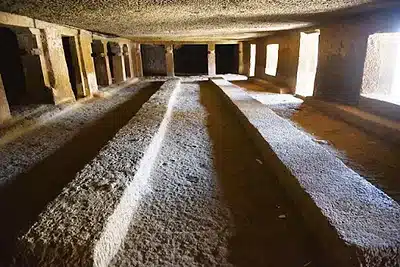
- The monks in the caves maintained close contact with the monks in China via the Silk Route, an ancient international highway that aided in the spread of Buddha’s teachings throughout Asia.
- Cave No. 41 – This cave is home to the 11-headed god Avalokiteshwara, who represents the compassion of all Buddhas. This is India’s first and only archaeological piece of this deity, as well as the world’s earliest recorded piece.
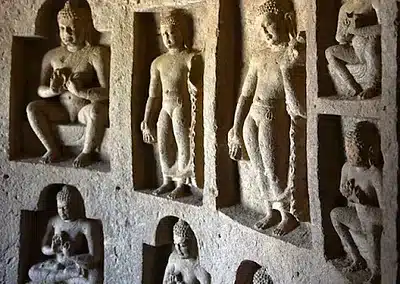
- Cave No. 90 – It is the oldest cave and the only one with two Japanese inscriptions engraved in its verandah. It is also the world’s first structure dedicated to housing the Lotus Sutra — the Buddhist teaching as told by Gautam Budhha near the end of his life.
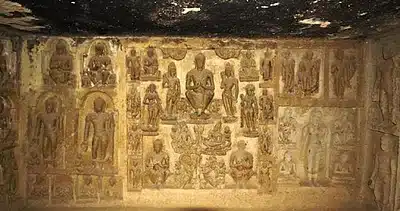
- The Kanheri Caves feature a colossal Buddha statue (22 feet tall) and Chaitya Griha, a depiction of a large Avalokiteshvara (Bodhisattva) with 11 heads, nada painted ceiling.

- It also features an evolved and complex water harvesting management system (indicated by the presence of water cisterns in almost every cave and massive water tanks).
- The inscription regarding Satavahana ruler Vashishtiputra Satakarni’s marriage to King Rudradaman I’s daughter is also notable.
- The Kanheri caves contain the earliest images of the Buddha in South India, and they became famous around the world after Chinese monk traveler Hiuen Tsang (602 CE – 664 CE) visited the monastery in the 7th century CE and is said to have brought a wooden image of Bodhisattva Avalokiteshvara to China, as well as numerous Sanskrit Buddhist manuscripts.
- Wooden building elements are used to construct the Chaityas and Viharas.
- The patronage of the Kanheri caves may be traced back to the Kushan and Mauryan dynasties, which reigned from the 2nd to 9th centuries BC. These caverns were later influenced by Gupta art.
- The spectacular Elephanta caves have also been impacted by the Kanheri caves.
- The Buddhist Cluster includes Kanheri Caves, Magathane Caves, and Mahakali Caves.
- The Magathane caves (6 km west of Kanheri caves) are known for the exquisite Makara decoration in the main cave, which is now decrepit.
- Some of the sculptures discovered in Magathane caves date from the 6th century CE.
Junagadh Caves
- Junagadh Buddhist Cave Groups are located in Junagadh district of the Indian state of Gujarat. These caves group includes Uparkot Caves, Khapra Kodiya Caves and Baba Pyare Caves.
- The so-called “Buddhist Caves” are not actually caves, but three separate sites of rooms carved out of stone to be used as monks’ quarters.
- These caves were carved starting from Emperor Ashoka’s period up to 1st–4th century AD.
Uparkot
- These caves located at Uperkot beyond the 300 ft deep moat, close to Adi Kadi Vav, were carved in 2nd–3rd century A.D.
- These caves have influence of Satavahana architecture with combination of Graeco-Scythian style.
Khapra Kodiya Caves
- The oldest, the Khapara Kodia Caves, on the basis of scribbles and short cursive letters on the wall, are dated to 3rd-4th century BC during the Emperor Ashoka’s rule and are plainest of all cave groups. These caves are also known as Khangar Mahal.
- They were carved into living rock during the reign of Emperor Ashoka and are considered the earliest monastic settlement in the area.
- These caves are along the edge of the ancient Sudarshan Lake and little outside Uparkot fort, Northerly.
- They are carved out in an east–west longitudinal ridge. Caves are small in area. But, it has unique architecture of the water tanks design on western side and ‘L’ shaped residence.
Baba Pyare Caves
- The Bava Pyara Caves are located near Modhimath, little outside Uparkot fort complex, southernly. These are much more intact than the Khapara Kodia caves.
- The caves were constructed during the Satavahana regime in 1st–2nd century A.D.
- According to the Xuanzang’s travel account they were constructed in 1st century A.D.
- Bava Pyara caves contains artworks of both Buddhism and Jainism.
Nashik Caves (Pandava Leni Caves)
- Pandavleni Caves, also known as Trirashmi Caves, are ancient rock-cut caves located on the Trirashmi hill about 3004 feet above sea level. These are a collection of ancient Hinayana Buddhist caves (B.C.250- A.D.600).
- Nasik caves are another name for them. Recently, three new caves have been discovered in the Trirashmi Buddhist cave complex by the Archaeological Survey of India (ASI).
- Captain James Delamaine first documented the Trirashmi Buddhist caves complex in 1823, and it is now an ASI-protected site.
- Leni is a Marathi word for caves. The Pandavleni Caves are made up of 24 carved cave temples known as viharas. The Chaitya is one of the 24 carved cave temples.
- In ancient times, these viharas served as monasteries where people could meet and discuss with monks, while the vihara also served as a prayer hall for Buddhist monks and disciples of Gautam Buddha.
- These caves were carved between the 1st and 3rd centuries BCE, with additional sculptures added up until the 6th century, reflecting changes in Buddhist devotional practices.
- Except for Cave 18, which is a 1st century BCE chaitya, the caves are mostly viharas.
- The oldest cave, No. 19, was built with a donation from Krishna, a Satavahana ruler in the first century BCE.
- The style of some of the more complex pillars or columns, such as those found in caves 3 and 10, is a good example of how the shape evolved.
- Inscriptions documenting contributions date the caves to the 1st century BCE.
- Pundru, which means “yellow ochre tint” in Pali, was the name given to the caverns.
- This is due to the fact that the caves were home to Buddhist monks who donned “the chivari or yellow robes.” The name Pundru was then changed to Pandu Caves (as per Ancient Monuments Act 26 May 1909).
- Cave evidence suggests that the caves witnessed the period between the Satavahana and the Western Kshatrapa, who ruled over this region in the first century CE.
- Following the decline of Buddhism, the site was occupied by Jains. Even during the medieval period, Jain monasteries were most likely still present.
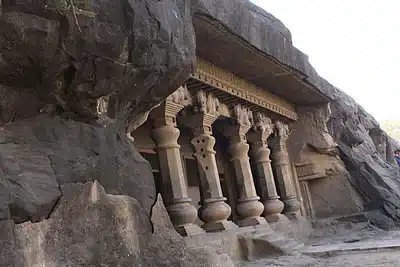
Features
- The Pandavleni caves are a collection of ancient Buddhist caves.
- The Kshatrapas, Satavahanas, and Abhirs – the three Kings who previously governed Nashik – are depicted in these caverns.
- The Pandavleni Caves are a set of 24 Buddhist caves of the Hinayana faith.
- All of the caves are excellent examples of intricate carving and craftsmanship, but Caves No. 3, 10, and 18 are especially noteworthy for their outstanding sculptures.
- Water seepage is a major issue in this area, and it is exacerbated during the rainy season. As a result, some of the caves have been converted into water reservoirs. One such example is Cave No. 1.
- Cave No.2 was carved as a Vihara (residential quarter) in the first and second centuries CE, and it was later converted into a shrine with Buddha images.
- Cave No. 3 is one of the most interesting, as it is lavishly decorated. There are six massive dwarves (doors). Inscriptions mention Gautamiputra Satakarni’s mother‘Gautami Balasri‘ had financed the construction of 3rd cave.
- Two caves stand out among the twenty-four caves:
- The main cave (Cave No. 18) which is the Chaitya (prayer hall), has a gorgeous Stupa; the pillars are one-of-a-kind because they have inscriptions written vertically on them.
- Cave no. 10 “Nahapana Vihara“, is complete in both structural and inscription details.
- The Trirashmi caves are superb instances of detailed carving and craftsmanship, with excellent sculptures.
- The caves have exquisite Buddha statues as well as prominent Jain Tirthankaras such as Vrishabhdeo, Bodhisattva symbols, Veer Manibhadra Ji, and Ambikadevi.
- The Nasik Caves’ inscriptions mention the King of Western Maharashtra, the Kshatrapa dynasty, the Satavahana dynasty, the excavation of the caves’ Vihars, Shrines, Chaityas, and Cisterns, and the giving of a hamlet to Nasik residents.
- The caves had an excellent water arrangement, with expertly chiseled water tanks exquisitely carved into the rocks.
- Cave No.11 “Jain cave” has one inscription mentioning it is the gift of the son of a writer: ” the benefaction of Ramanaka, the son of Sivamitra, the writer.”
- Cave No.12 has one inscription mentioning it is the gift of a merchant named Ramanaka.
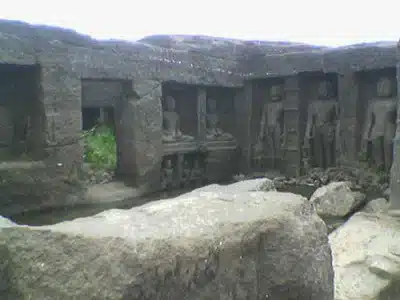
- Cave No.17, “Yavana vihara” was built by a devotee of Greek descent, who presents his father as being a Yavana from the northern city of Demetriapolis.
- Cave No.19 “Krishna vihara”: The cave has one inscription of king Krishna of the Satavahanas, which is the oldest known Satavahana inscription, dated to 100-70 BCE
Bedse Caves
- Bedse Caves (also known as Bedsa Caves) are a group of Buddhist rock-cut monuments situated in Maval taluka, Pune District, Maharashtra, India.
- The history of the caves can be traced back to the Satavahana period in the 1st century BCE. They are some 9 km from the Bhaja Caves. Other caves in the area are Karla Caves, Patan Buddhist Cave and Nasik Caves.
- There are two main caves. The best known cave is the chaitya (prayer hall – Cave 7) with a comparatively large stupa, the other cave is the monastery or vihara (Cave 11). They are marked by a profusion of decorative gavaksha or chaitya arch motifs.
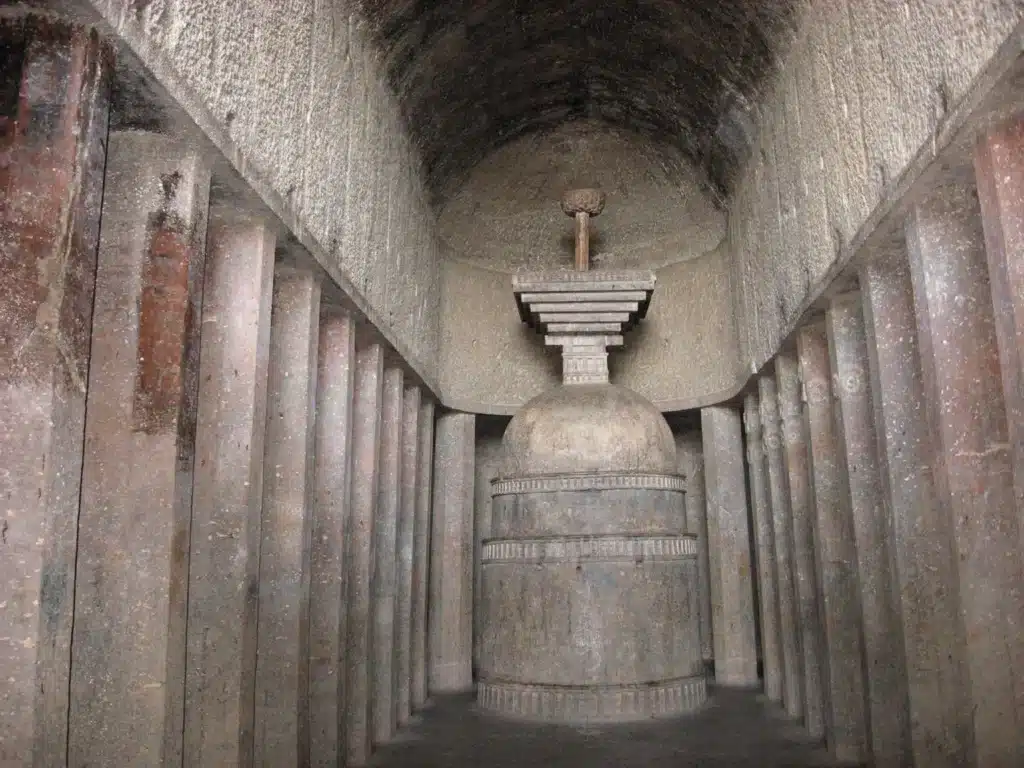
Mahakali Caves
- The Mahakali Caves, also known as the Kondivita Caves, are a collection of 19 rock-cut Buddhist caves dating from the first century BCE to the sixth century CE.
- This Buddhist monastery may be found in the Andheri neighborhood of Mumbai (Bombay) in western India.
- Caves are carved out of a solid black basalt rock,(volcanic trap breccias, prone to weathering).
- Mahakali Caves are a collection of 19 rock-cut monuments (4 caves on the southeastern face and 15 caves on the northwestern face) dating from the first century BCE to the sixth century CE.
- The northwest group of caves dates from the 4th to 5th centuries, although the south-eastern group is older.
- These rock-cut caves have existed since the ancient Ashoka Empire, and Buddhist monks used them as dwellings and meditation chambers as long as 2,000 years ago.
- One of the stupas that were originally built as a Buddhist monument is now revered as a Hindu lingam statue.
- The writings on the wall are in Pali script.
- Mahakali Caves are a few kilometers away from Paspauli. According to the inscription, a person from Paspauli donated the Vihara at Mahakali.
- From the first century BCE to at least the 12th century CE, the Mahakali caves housed an active monastery.
Features
- Mahakali Caves is a Buddhist Monastery made up of two sets of rock-cut caverns, one with four caves in the northwest and the other with fifteen caves in the southeast.
- The majority of these caves are viharas and cells for monks.
- There are Buddha statues and stupas in the main cave, as well as Buddha idols carved into the rocks.
- There are also rock-cut cisterns and ruins of other constructions in the monument.
- A one-of-a-kind stupa from the Mahakali caves with the sculpture of an esoteric Buddhist god had fallen from cave no. 1 to the foothill.
- She is now worshipped as Goddess Mahakali in the Juna Mahakali Mandir temple (old Mahakali temple).
- The rock here is volcanic Breccia, which is not ideal for preservation.
- Only cave number 9 is chaitya, and it houses mangled figures from Buddhist mythology, as well as seven Buddha images.
- There are a total of twenty openings to the Mahakali caves. The caves in the south-east are older than the caves in the north-west.
- Verandahs and courtyards can even be found in certain caves.
- Two of the four caves in the North-West category were used as dwellings, while one was utilized as a dining area.
- Several broken tombstones litter the region between the two cave groupings.
- A modest theatre built for the teacher and his pupils is one of the more interesting rock-cut monuments. Several broken stone steps go down to the southern series of caverns from the west.
- Chaitya, cave number nine, is a one-of-a-kind cave among the fifteen caverns. It is Kondivite’s largest cave, with seven depictions of Lord Buddha and other figures from Buddhist legend.
- For centuries, many Buddhist and Shaivite monasteries coexisted in this area. The nearby Jogeshwari cave exemplifies this coexistence.
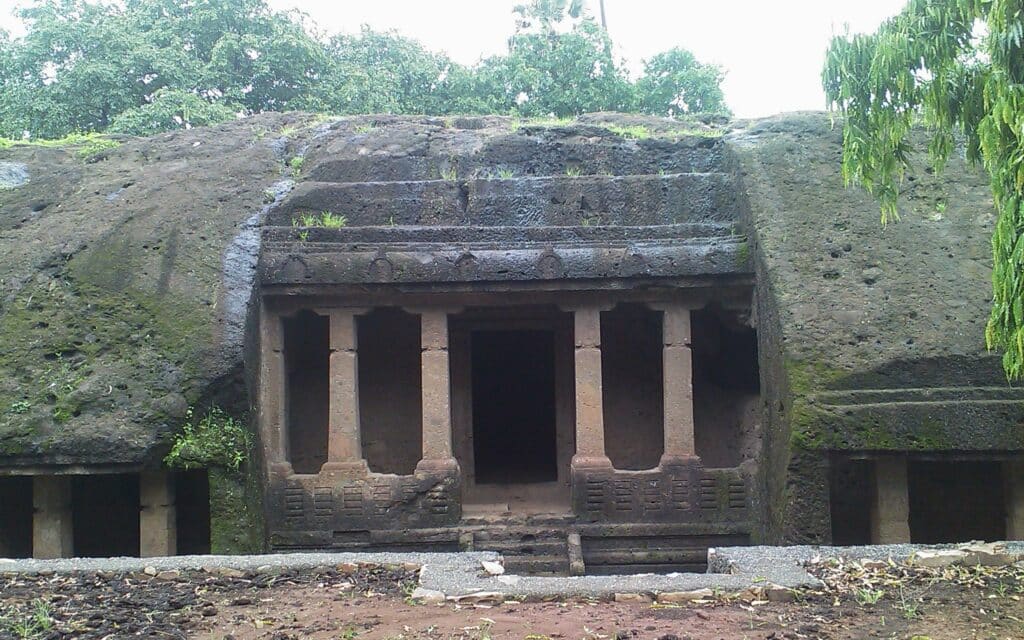
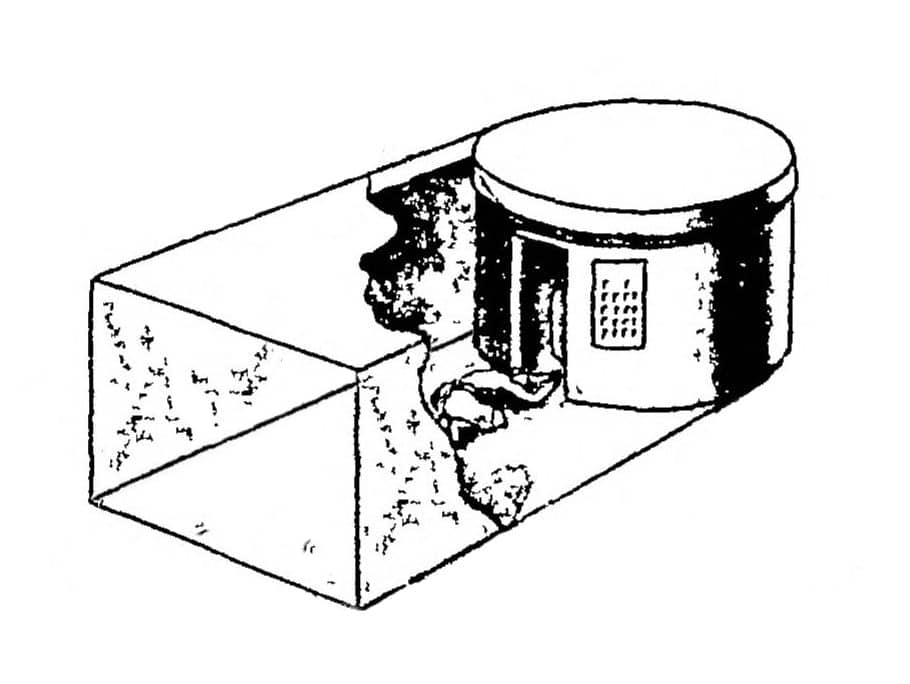
Ganeshleni/Lenyadri/Junnar Caves
- Lenyadri, sometimes called Ganesa Lena, Ganesh Pahar Caves, are a series of about 30 rock-cut Buddhist caves, located about 4.8 kilometres (3.0 mi) north of Junnar in Pune district in the Indian state of Maharashtra.
- The current name “Lenyadri” literally means “mountain cave”. It is derived from ‘Lena’ in Marathi meaning “cave” and ‘adri’ in Sanskrit meaning “mountain” or “stone”.
- The Lenyadri caves date between the 1st and 3rd century AD and belong to the Hinayana Buddhism tradition.
- Twenty-six of the caves are individually numbered. The caves face to the south and are numbered serially from east to west. Caves 6 and 14 are chaitya-grihas (chapels), while the rest are viharas (dwellings for monks).
- Two of the central cells of Cave 7 – originally a Buddhist vihara – were at an unknown later date appropriated for the worship of the Hindu god Ganesha. The rest of the cells and the hall of Cave 7 remain in their original form. This Ganesha Lena vihara is one of the Ashtavinayak shrines, a set of the eight prominent Ganesha shrines in Western Maharashtra. In regional mythology, this is the Girijatmaja cave where goddess Parvati desired to be a mother and where Ganesha was born.
Naneghat Caves
- Naneghat pass (nane means “coin” and ghat means “pass“) was one of the trade routes. It connected the Konkan coast communities with Deccan high plateau through Junnar.
- William Sykes found them while hiking during the summer of 1828.
- This was the most important trade route, as it connected harbour of Sopara and Kalyan directly to Junnar and Paithan. The name is given because this path was used as a tollbooth to collect toll from traders crossing the hills. While going through Malshej Ghat, we can easily get a glimpse of Naneghat after Murbad.
- The inscriptions are attributed to a queen of the Satavahana dynasty. Her name was either Nayanika or Naganika, likely the wife of king Satakarni.
Ajanta Caves
- The Ajanta Caves are rock-cut Buddhist cave monuments dating from the 2nd century BCE to about 480 CE in the Aurangabad district of Maharashtra.
- The caves include paintings and rock-cut sculptures described as among the finest surviving examples of ancient Indian art, particularly expressive paintings that present emotions through gesture, pose and form.
- There are 29 caverns in all, 25 of which were utilised as Viharas (residence caves) and 4 of which were used as Chaitya (prayer halls).
- The caves consist of 36 identifiable foundations, some of them discovered after the original numbering of the caves from 1 through 29. The later-identified caves have been suffixed with the letters of the alphabet, such as 15A, identified between originally numbered caves 15 and 16. The cave numbering is a convention of convenience, and does not reflect the chronological order of their construction.
- Ajanta Caves built in 2 Phases:
- Satvahana Period: The earliest group consists of caves 9, 10, 12, 13 and 15A. The murals in these caves depict stories from the Jatakas. Later caves reflect the artistic influence of the Gupta period, but there are differing opinions on which century in which the early caves were built.
- Vakataka Period: The second phase of construction at the Ajanta Caves site began in the 5th century. The second phase is attributed to the theistic Mahāyāna, or Greater Vehicle tradition of Buddhism. Caves of the second period are 1–8, 11, 14–29, some possibly extensions of earlier caves. Caves 19, 26, and 29 are chaitya-grihas, the rest viharas.
- The Buddhist monks inscribed the Ajanta caves under the patronage of the Vakataka rulers, one of them was Harishena.
- The figures in these caves were painted with frescoes and exhibit a high level of naturalism. The colours were created from local plants and minerals.
- The paintings’ outlines were painted in red, and then the insides were painted. The absence of blue in the paintings is one of the most remarkable elements.
- The paintings are mostly on Buddhism, including Buddha’s life and Jataka stories.
- Five of the caves were built during the Hinayana period of Buddhism, while the other 24 were built during the Mahayana period.
- The Ajanta caves are mentioned in the travel journals of Chinese Buddhist pilgrims Fa Hien and Hieun Tsang.
- The Mahaparinirvana of Buddha in Cave No. 26 and Naga King and his consort in Cave.no 19 are some of the most famous sculptures in the Ajanta Caves.
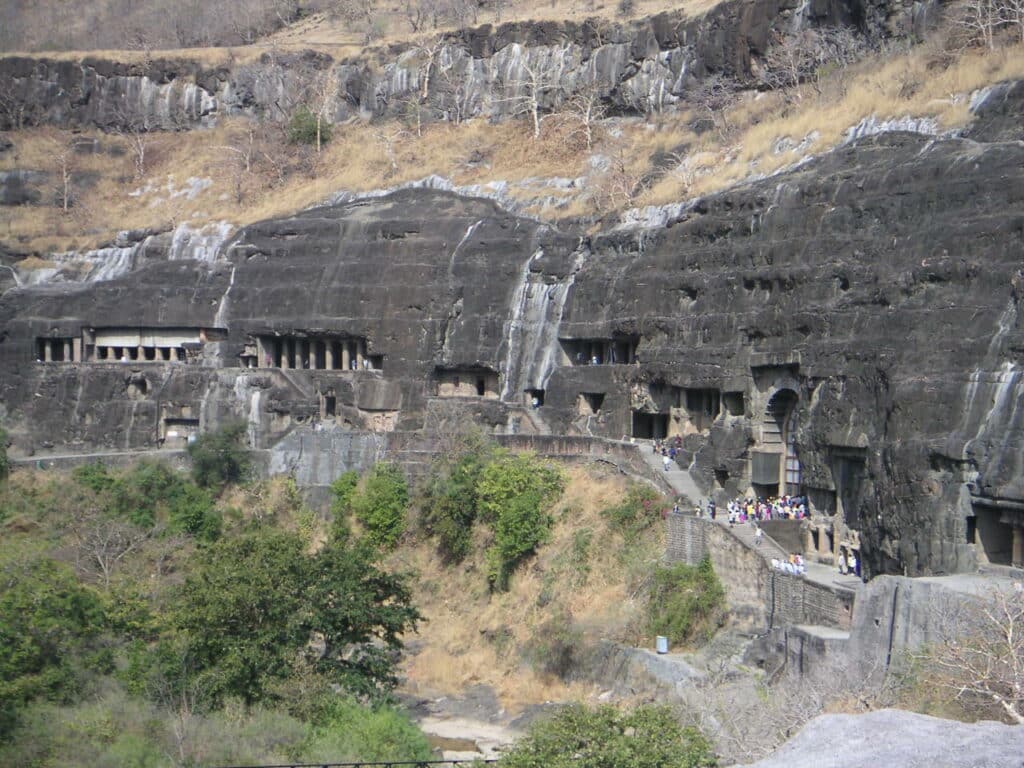
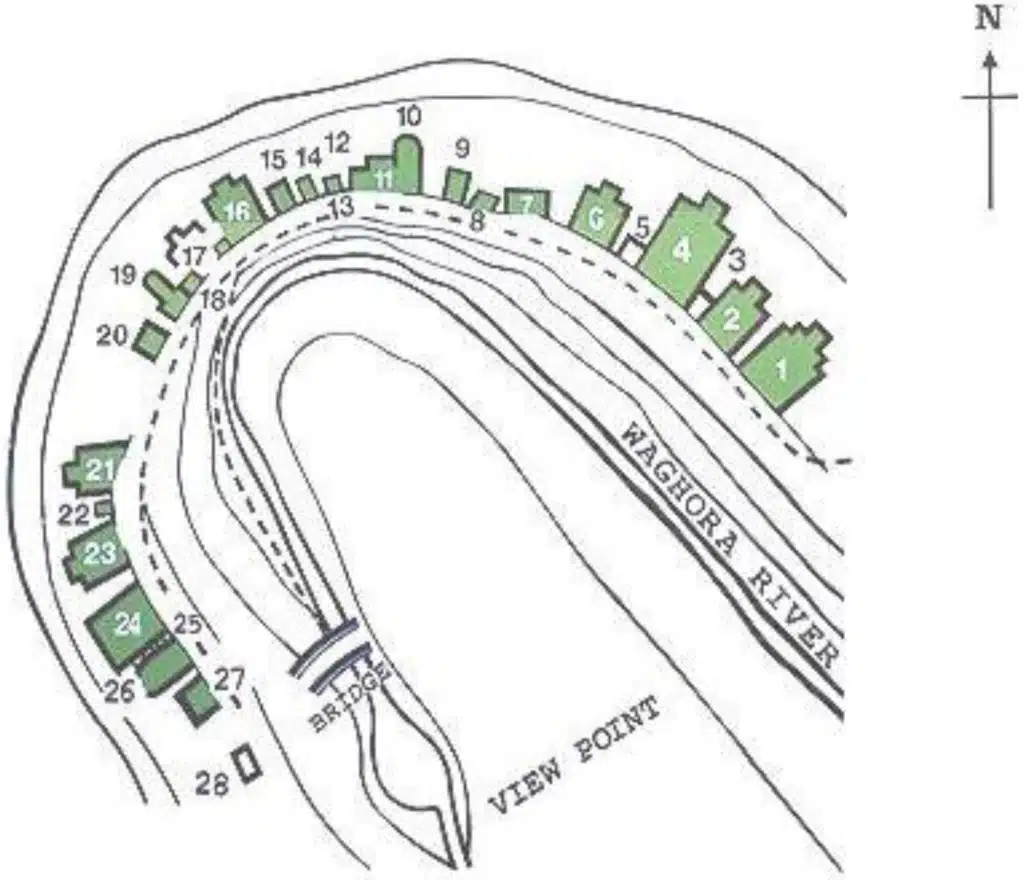
Udayagiri and Khandagiri Caves
- Udayagiri and Khandagiri Caves, formerly called Kattaka Caves or Cuttack caves, are partly natural and partly artificial caves of archaeological, historical and religious importance near the city of Bhubaneswar in Odisha.
- The caves are situated on two adjacent hills, Udayagiri and Khandagiri mentioned as Kumari Parvata in the Hathigumpha inscription.
- It is believed that most of these caves were carved out as residential blocks for Jaina monks during the reign of King Kharavela.
- Udayagiri means “Sunrise Hill” and has 18 caves while Khandagiri has 15 caves.
- The caves of Udayagiri and Khandagiri, called lena or leṇa in the inscriptions, were dug out mostly during the reign of Kharavela for the abode of Jaina ascetics.
- The most important of this group is Ranigumpha in Udayagiri which is a double storeyed monastery. Other important caves include Hathi Gumpha, Ananta Gumpha, Ganesha Gumpha, Jaya Vijaya Gumpha, Mancapuri Gumpha, Bagha/Byaghra/Vyaghra Gumpha and Sarpa Gumpha.
- Archaeological Survey of India has listed Udayagiri and Khandagiri Caves in the list of “Must See” Indian Heritage.
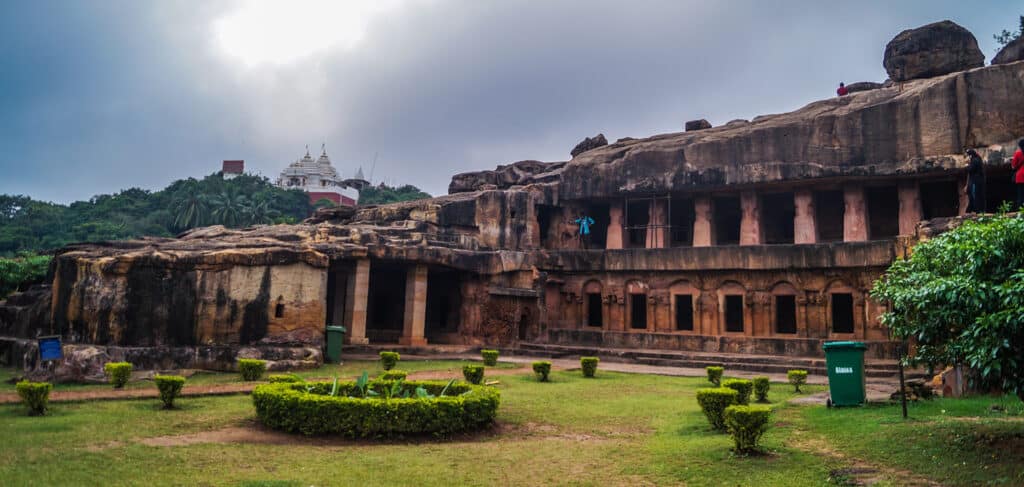
- In Udayagiri, Hathi Gumpha (cave 14) and Ganesha Gumpha (cave 10) are especially well known for their historically important sculptures and reliefs. Raninka Na’ara (Queen’s Palace Cave, Cave 1) is also an extensively carved cave and elaborately embellished with sculptural friezes.
- Khandagiri offers a fine view back over Bhubaneswar from its summit. The Ananta Cave (Cave 3) depicts carved figures of women, elephants, athletes, and geese carrying flowers.
Caves at Udayagiri
- The Udayagiri hills are on the right-hand side as the visitor approaches from Bhubaneswar. Compared to Khandagiri, Udayagiri offers more beautiful and better maintained cave shrines. There are 18 caves in Udayagiri.
Rani Gumpha “Cave of the Queen”
- Rani Gumpha is the largest and most popular cave among the caves of Udayagiri and Khandagiri.
- This cave is double storeyed. Each storey has three wings and the central wing is bigger among all the three wings. The lower floor has seven entrances in the middle wing whereas the upper floor has nine columns. The upper portion of the central wing has relief images depicting the victory march of a king. Many of the cells have carved dwara pala images; some of them are disfigured.

Mancapuri and Swargapuri Gumpha
- Mancapuri and Swargapuri Gumpha is double storeyed. Manchapuri cave depicts two male and two female figures worshipping the Kalinga Jina that Kharval brought back from Magadha. It has a damaged Jain religious symbol which was probably used for worship.
- There are three inscriptions: one inscription talks about the chief queen of Kharavela, and the other two refer to Kudepasiri, the successor of Kharavela and Badukha, the son or brother of Kudepasiri.
Ganesha Gumpha
- The cave is named for the carved figure of Ganesha on the back of its right cell. Of course, it would have been carved in the later period and it cannot be the original work. The cave has two large statues of elephants carrying garlands at the entrance and is the first example of sculpture animals used as a guard to the entrance.
- Also, the carved figures of dwara palas are found at the entrances. The carvings in this cave narrate the story of the elopement of Bassavadatta, Princess of Ujjayini, with King Udayana of Kausambi in the company of Vasantaka.
Vyaghra Gumpha
- Vyaghra Gumpha is one of the popular caves in Udayagiri. The cave, which is in ruins, has an entrance carved like a tiger’s mouth, with the single-cell forming the tiger’s throat.
- It is one of the most photographed sites in Udayagiri. The word vyaghra means “tiger”. The inscription found here tells that this cave belongs to the city judge Sabhuti.
Hati Gumpha
- Hati Gumpha is a large natural cavern with an inscription by Kharavela which is the main source of information about him. The cave is known as Hati Gumpha due to its exquisite carvings of elephant. The word hati means “elephant”.
- The Hathigumpha cave (“Elephant Cave”) has the Hathigumpha inscription, written by Raja Kharavela, the king of Kalinga in India, during the 2nd century BCE.
- The Hathigumpha inscription consists of seventeen lines incised in deep cut Brahmi letters on the overhanging brow of a natural cavern Hathigumpha in the south side of the Udayagiri hill. The inscription also refers to the Kharaval’s feat of bringing back the status of Agra-Jina (transl. Rishabhanatha) which was taken by Nanda empire. It faces the rock edicts of Asoka at Dhauli, situated about six miles away.
Caves at Khandagiri
- The Khandagiri hills fall on your left side when you enter into this area from Bhubaneswar. There are 15 caves in Khandagiri. These caves were renovated during the reign of Uddyotakeshari of Somavamshi dynasty.
- Ananta Gumpha: The cave has sculptures of women, elephants, geese, etc.
- Navamuni Gumpha: Navamuni Gumpha is a roughly cut cell with the sculptures of nine Jain Tirthankaras and Sasana Devis. These sculptures were added to the caves in the 11th century by Somavamshi dynasty.
- Trusula Gumpha: There are three sculptures of Rishabha Deva who is found in the Kayotsarga posture. Apart from these sculptures, there are sculptures of 24 Jain Tirthankaras which look rough.
- Ambika Gumpha: There are three relief sculptures, two of Rishabhanatha and one Amra the sasana-devi of Neminatha.
Udayagiri Caves
The Udayagiri Caves are twenty rock-cut caves near Vidisha, Madhya Pradesh from the early years of the 5th century CE. Udayagiri Caves are set in two low hills near Betwa River, on the banks of its tributary Bes River.
They contain some of the oldest surviving Hindu and Jain temples and iconography in India. They are the only site that can be verifiably associated with a Gupta period monarch from its inscriptions.
One of India’s most important archaeological sites, the Udayagiri hills and its caves are protected monuments managed by the Archaeological Survey of India.
Udayagiri caves contain iconography of Jainism. They are notable for the ancient monumental relief sculpture of Parshvanatha in his incarnation.
The site has important inscriptions of the Gupta dynasty belonging to the reigns of Chandragupta II (c. 375-415) and Kumaragupta I (c. 415-55).
The Udayagiri Caves complex consists of twenty caves (19 Hindu Caves, and 1 Jaina Cave). Iconic Varaha Sculpture rescuing the earth symbolically represented by Bhudevi clinging to the boar’s tusk as described in Hindu mythology is a salient feature of the place.
Cave 4: Shaivism and Shaktism
- Cave 4 was named the Vina cave by Cunningham. It presents both Shaiva and Shakti themes.
- The temple sanctum is dedicated to Shiva, with the sanctum containing an ekamukha linga, or a linga with a face carved on it. Outside its entrance, in what was a mandapa and now is eroded remnants of a courtyard are matrikas (mother goddesses), eroded likely because of weathering.
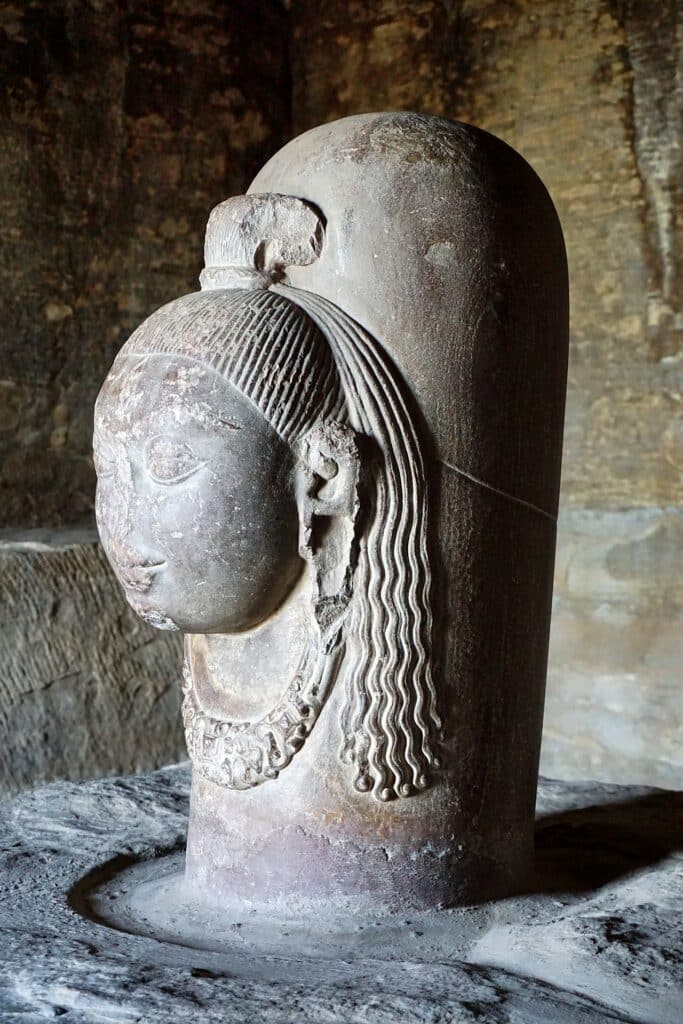
Cave 5: Vaishnavism
- Cave 5 is a shallow niche more than a cave and contains the much-celebrated colossal Varaha panel of Udayagiri Caves.
- It is the narrative of Vishnu in his Varaha or man-boar avatar rescuing goddess earth in crisis. Willis has described the relief as the “iconographic centre-piece of Udayagiri“.
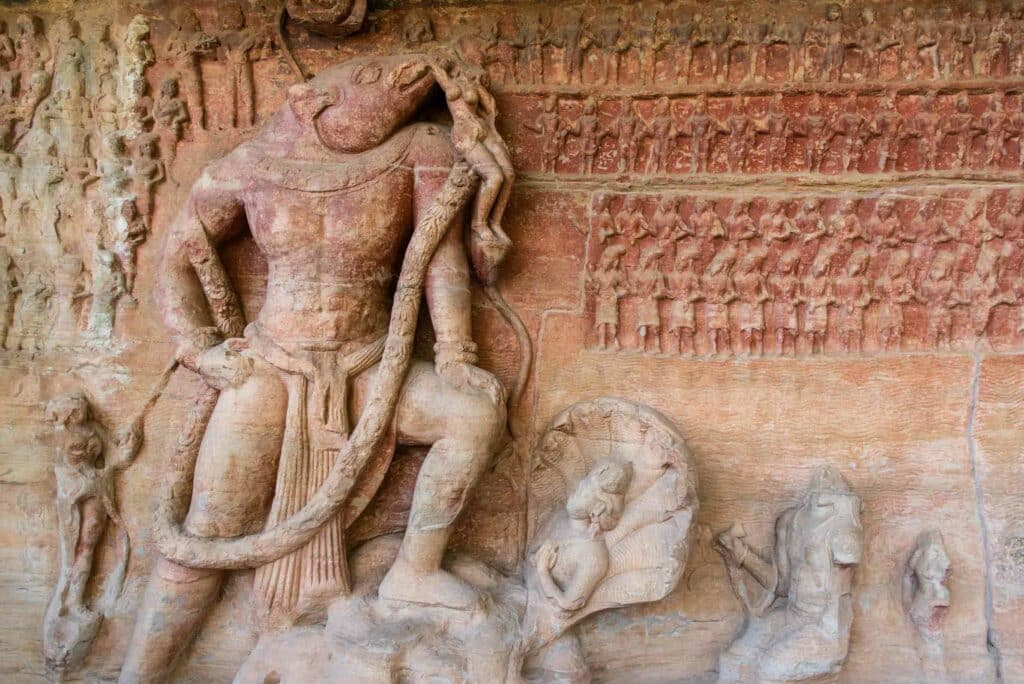
Cave 13: Vaishnavism
- Cave 13 contains a large Anantasayana panel, which depicts a resting figure of Vishnu as Narayana. Below the leg of Vishnu are two men, one larger kneeling devotee in namaste posture, and another smaller standing figure behind him.
- The kneeling figure is generally interpreted as Chandragupta II, symbolising his devotion to Vishnu. The other figure is likely his minister Virasena.
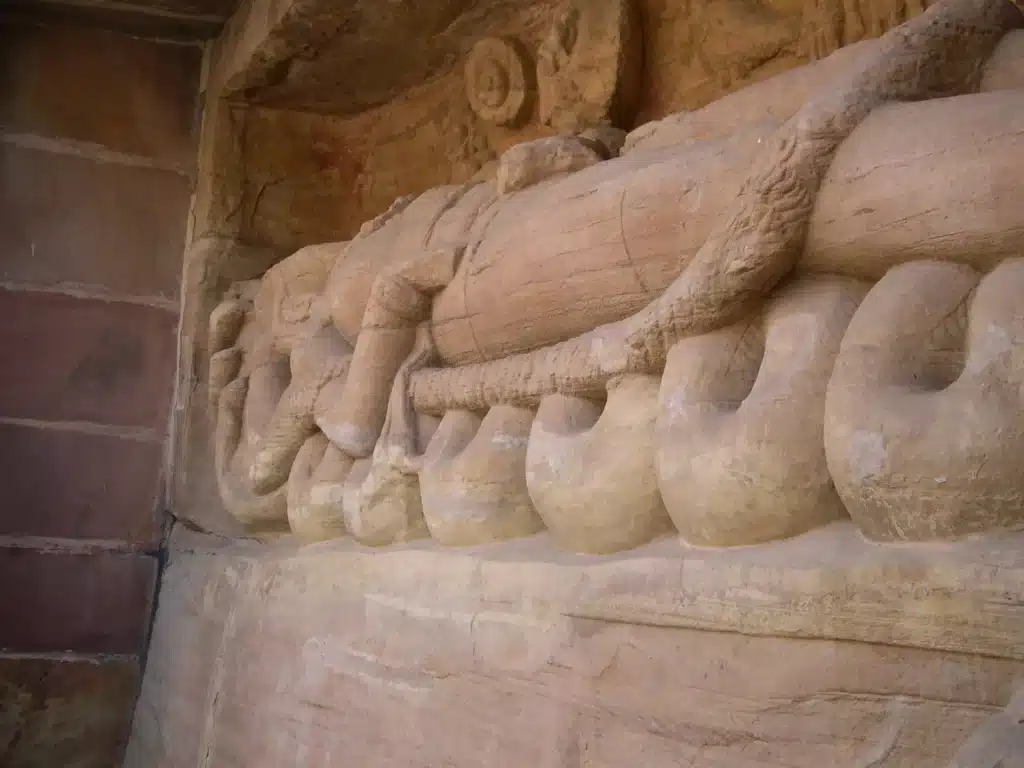
Bagh Caves
- The Bagh Caves are a group of nine rock-cut monuments, situated among the southern slopes of the Vindhyas in Bagh town of Dhar district in Madhya Pradesh state in central India. These monuments are located at a distance of 97 km from Dhar town. These are renowned for mural paintings by master painters of ancient India.
- They were developed around the 6th century A.D.
- The most beautiful paintings known to have been created by prehistoric man can be found in these rock cut caverns. Only 5 of the original 9 caverns have survived.
- Time of development – According to mythology, Buddhist monk Dataka constructed these caves. The caves were carved between the late 4th and early 6th centuries AD.
- These caves were first discovered in modern times in 1818.
Features
- The Bagh caves, like the Ajanta caves, were carved out of the perpendicular sandstone rock face of a hill on the far bank of the Baghani, a seasonal stream.
- Only five of the nine caves have survived, despite their Buddhist inspiration.
- All of them are ‘viharas,’ or monks’ resting places, with a quadrangular design. The ‘chaitya,’ or prayer hall, is a tiny chamber usually found toward the back.
- Cave 4, also known as the Rang Mahal, is the most important of the five caves that still exist (Palace of Colors).
- Mural Paintings are well-known in Bagh Caves. A thick mud plaster of a brownish orange colour was used to cover the walls and ceilings before painting.
- Lime-priming was applied over the plaster, and then the paints were applied.
- The employment of a permanent fast-drying painting medium consisting of coloured pigment mixed with a water-soluble binder media is referred to as tempera technique.
- In various places of India, the sophisticated form of art represented in the Ajanta paintings can also be seen in surviving wall paintings and mural remnants.
- Ajanta Caves are perhaps the only instances of Indian murals visible to the outside world.
- However, it has been established that the tradition that began at Ajanta actually began in ancient times. And it didn’t stop at Ajanta; it was carried on by people of many faiths in various places of India.
- A reddish-brown grainy and thick mud plaster was spread out on the walls and ceilings to prepare the ground.
- Only Caves 3 and 4 had survived the ravages of time when the Bagh caves were discovered. Bagh’s murals exemplify the “golden age” of Indian classical art.
- Tempera was used to paint the Viharas of Bagh’s walls and ceilings, with shards still evident in Caves 3 and 4 (remnants also observed in Caves 2, 5, and 7).
- Cave 2, popularly known as “Pandava Cave,” is the cave with the best preservation.
- These artworks are more worldly than spiritualistic in nature.
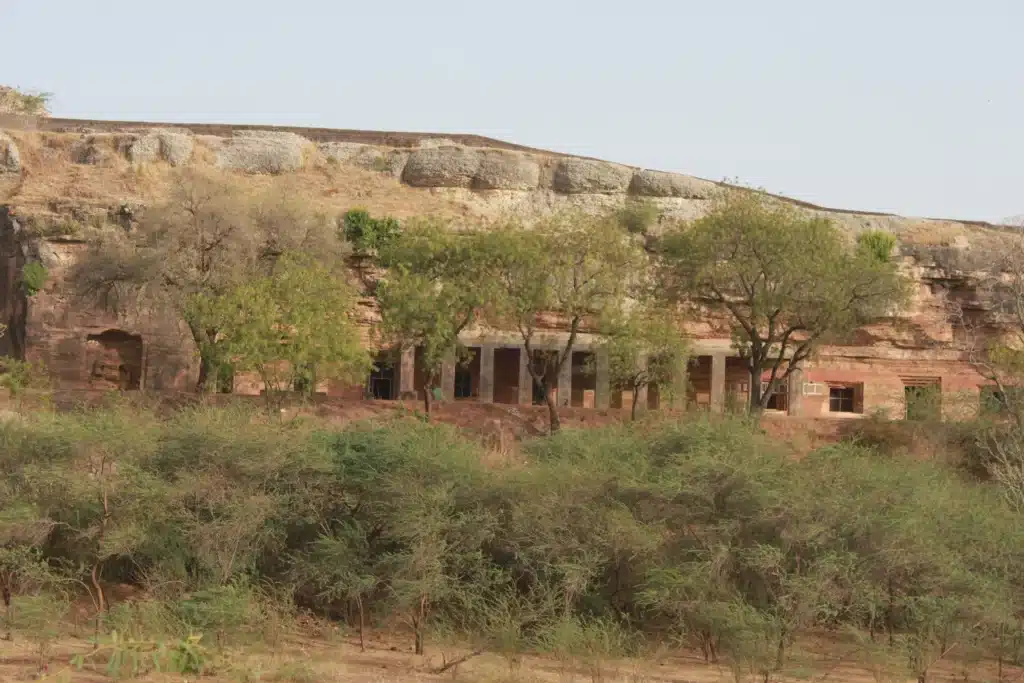

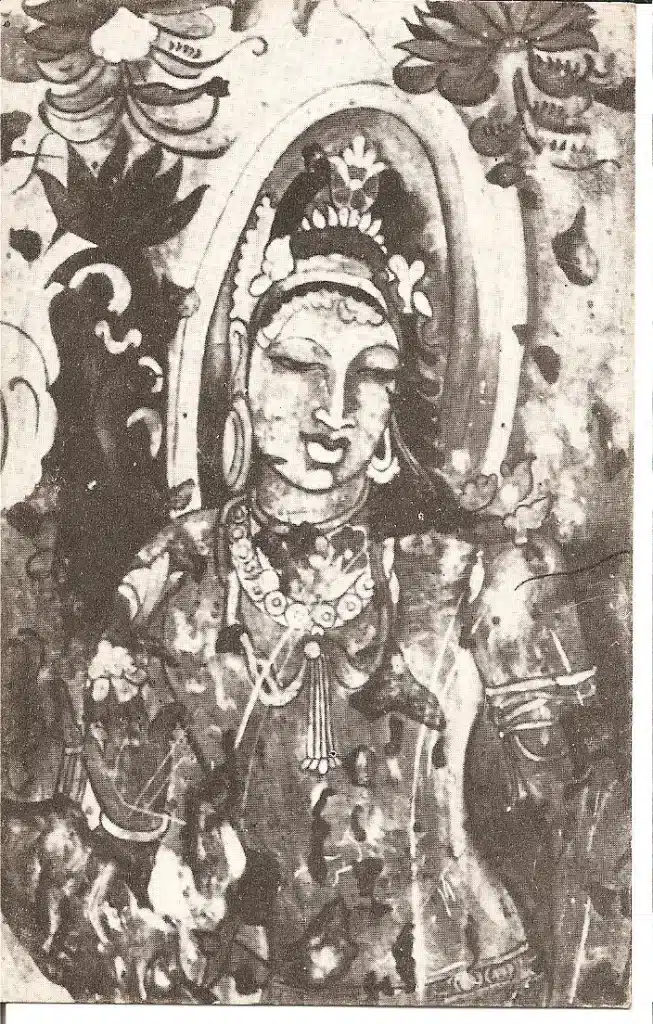
Ellora Caves
- Ellora (Locally known as ‘Verul Leni’) is located in the Aurangabad district of Maharashtra, India. It is one of the largest rock-cut Hindu temple cave complexes in the world, with artwork dating from the period 600–1000 CE.
- It is a UNESCO World Heritage Site with cave temples dedicated to Hinduism, Buddhism, and Jainism.
Features of Ellora Caves
- In terms of topic and architectural styles, the caverns represent a natural diversity.
- The 17 Hindu caves ([caves 13-29] caves 14, and 15 are famous and are known as Ravan Ki Khai and Dashavatar caves, respectively), 12 Buddhist caves (caves 1 – 12), and 5 Jain caves ([caves 30 – 34], Jaina caves include Indra Sabha and Jagannath Sabha) built in close proximity demonstrate the religious harmony prevalent during this period of Indian history.
- Ellora has a number of well-known caverns, including:
- Vishwakarma Cave, also known as a carpenter’s cave, is a Buddhist Chaitya cave. Here, Buddha is seated in Vyakhyana Mudra, with a Bodhi tree etched behind him.
- Ravan ki Khai is the theme of Cave No. 14.
- Dashavatar Temple is located in Cave No. 15.
- Kailash temple dedicated to Lord Shiva is located in Cave No. 16.
- It was carved out of a monolith and even contains a courtyard; it was built under the patronage of Rashtrakuta monarch Krishna I.
- A sculpture representing Ravana shaking Mount Kailash may also be found on the wall of Cave No. 16 in the Kailash temple.
- It is regarded as one of India’s greatest sculptures.
- Dhumal Lena is found in Cave 29.
- Rameshwar temple is found in Cave No. 21
- Indra Sabha (Cave 32) and Jagannath Sabha (Cave 33) are two well-known Jain caves.
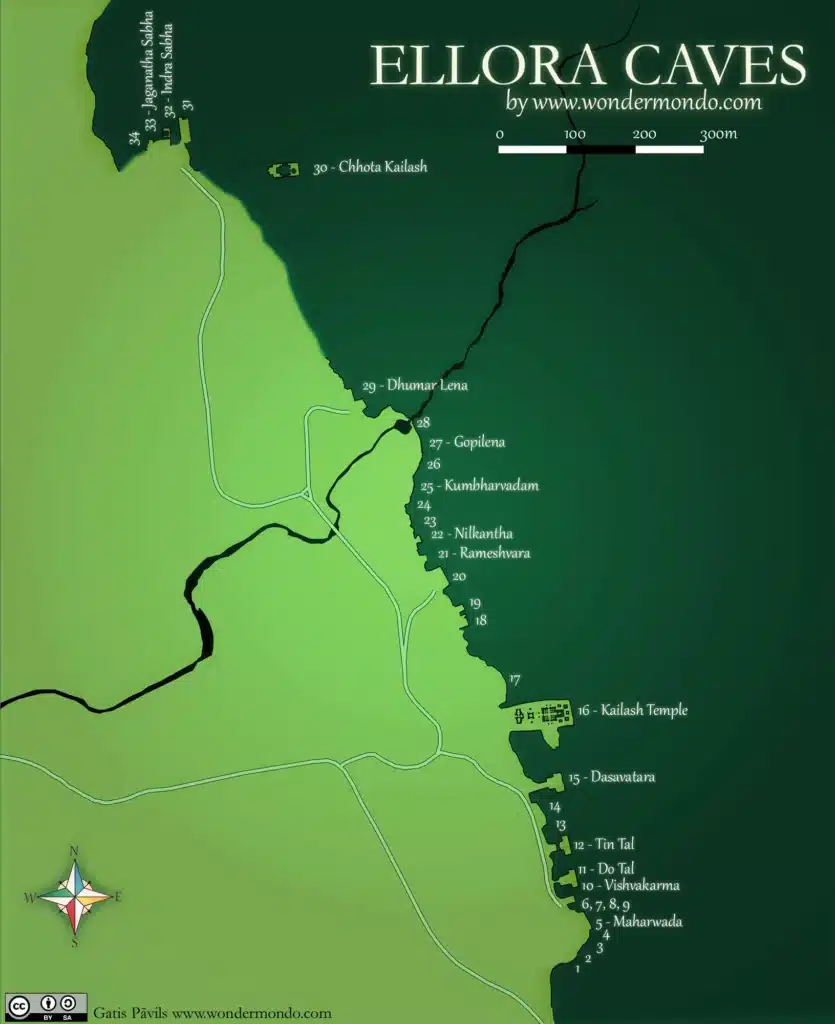
Elephanta Caves
- The Elephanta Caves are located on Elephanta Island (also known as the Island of Gharapuri), which consists of two hillocks separated by a thin valley in Western India. Numerous old archaeological relics dot the little island, serving as the only witnesses to its complex cultural past. These archaeological relics show that the area was occupied as early as the 2nd century BC.
- Elephanta cave temples (on a small island off the coast of Bombay) date from the eighth century A.D. and are similar to those at Ellora.
- The Elephanta Caves were initially intended to be a Buddhist site, but the Shaivite faith eventually took over.
- The caves on the island are divided into two groups:
- A collection of five Hindu caves with rock-cut stone sculptures. They are primarily associated with the Shaivite sect of Hinduism, and are primarily dedicated to Lord Shiva.
- A pair of Buddhist caves with cisterns that run along the island’s banks. Near the hill, there is a mound that resembles a Buddhist stupa.
- Between the 14th and 17th centuries, when Portuguese ships began to ply the Arabian Sea and used these caves as a base, the caves suffered extensive damage.
- They caused significant damage to the statues, which was exacerbated by water logging and dripping rainwater.
Features of Elephanta Caves
- The caves are constructed of solid basalt rock.
- The older sculptures have paint splatters.
- The primary cave (Cave 1) has a rock-cut temple complex that includes a main chamber dedicated to Lord Shiva, two lateral chambers, subsidiary shrines, and carvings depicting his life and several episodes associated with his life, such as his marriage with Parvati and the river Ganga descending in his hair.
- They are known for their sculpture (showing slenderness in the body, with stark light and dark effects), particularly the great Trimurti figure of Shiva (Shiva is akin to the Trimurti figure of Brahma, Vishnu, and Mahesh).
- Ravana shaking the Kailash, Tandav dance of Shiva, Ardh-narishwara, are other notable sculptures.
- It was also designated as a UNESCO World Heritage Site in 1987.
- The dating of the famed Elephanta Caves is still a point of contention, with estimates ranging from the 6th to the 8th centuries.
- The Rashtrakuta monarchs excavated the cave temple, which is dedicated to Lord Shiva, sometime in the 8th century.
- The most important cave is the Mahesa-murti cave.
- The cave’s main body is 27 metres square and is supported by six columns in each row (excluding the porticos on the three open sides and the back aisle).
- This cave has sculpted compartments with amazing depictions of Ardhanarishvara, Nataraja Shiva, Ravana hoisting Kailasa, Kalyana-Sundara Shiva, Andhakari-Murti, and others (slaying of Andhaka demon).
- There are also massive figures of ‘dwarapalakas,‘ or doorkeepers, which are rather stunning.
- The main cave is well-known for its carvings honouring Shiva, who is worshipped in a variety of shapes and acts.
- The Sitabai Temple, a vast prayer hall with walls covered with beautiful and detailed sculptures located near the enormous cave, is another structure that has remained quite intact in comparison to the other decaying caves.
- The overall layout of the caverns makes extensive use of Hindu spiritualistic concepts and iconography.
- One of the most notable collections for the Shiva religion is the fifteen massive reliefs surrounding the lingam chapel in the main Elephanta Cave.
- Important innovations in rock-cut architecture include the layout of the caves, including the pillar components, the location and partition of the caverns into separate segments, and the provision of a sanctuary or Garbhagriha of the sarvatobhadra plan.
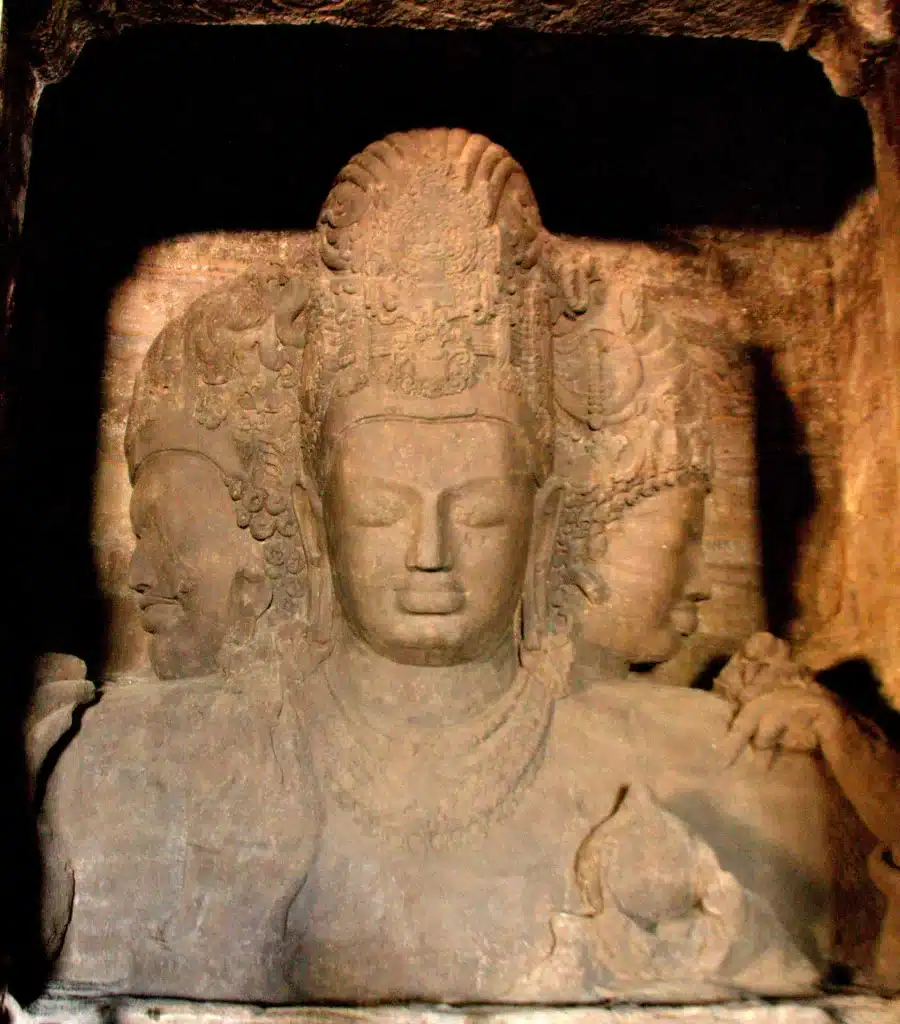
Shivleni Caves
- The Shivleni Caves (Shiva leni; Jogai Mandap; Hattikhana) in Ambajogai, Maharashtra, India are rock-cut cave monuments which date in King Udayaditya (reigned c. 1060–1087) from Paramara dynasty of Malwa.
- The caves include sculptures of Hindu deities like Shiva, Saptamatrukas and Ganesha.
- Shivleni Caves are situated hardly half a kilometer to the north-west of Yogeshvari Temple, along the banks of the Jayvanti river.
- A local story claims that the monument is the wedding court of the jogaidevi, whose temple is situated nearby. It is said that the wedding was planned to take place in this mandap but could not take place for supernatural reasons, and the elephants and everything inside it turned to stone, hence the name ‘Jogai Mandap’.
Mandapeshwar Caves
- It is also known as Montperir Caves, located in Borivali, near Mumbai, and was built as a Brahmanical cave during the late Gupta dynasty.
- It was later transformed into a Christian cave, however. Sculptures of Natraja, Sada Shiva, and Ardhanarishwara can be seen among the site’s ruins.
- Above the cave precincts are the church and its graveyard.
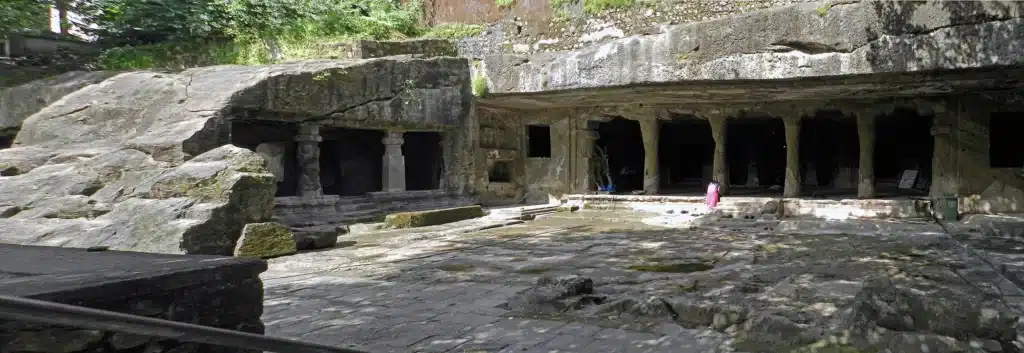

Very Very Useul to Me